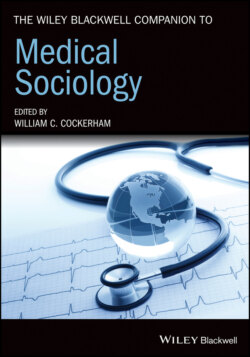Читать книгу The Wiley Blackwell Companion to Medical Sociology - Группа авторов - Страница 86
THE SOCIOLOGY OF THE BODY: SOME ILLUSTRATIVE ISSUES Illness and Lived Bodies
ОглавлениеThe literature on the experience of chronic illness and disability drew attention to many of the themes discussed above prior to the more recent emergence of the body and embodiment literature, most particularly the fundamental link between the self and the body. A number of researchers (Broom et al. 2015; Charmaz 2000) have documented how this occurs in the case of chronic illness. Here the relationship between the body and self can be seriously disrupted. Simon Williams (1996) has illustrated this well by drawing on the findings of research into chronic illness. He demonstrates how the experience of chronic illness involves a move from an “initial” state of embodiment (a state in which the body is taken for granted in the course of everyday life) to an oscillation between states of (dys)embodiment (embodiment in a dysfunctional state) and “re-embodiment.”
Attempts to move from a dys-embodied state to a re-embodied state require a considerable amount of biographical work as a result of what Bury (1982) calls “biographical disruption” and can prompt people to engage in what Gareth Williams (1984) terms “narrative reconstruction.” Disruptions and reconstructions are neither isolated nor linear, for while illness may disrupt a biographical trajectory it is more likely to be a series of “ruptures” without clear beginnings, middles or ends. As Riessman (2015: 1057) puts it: “Illness by its very nature disrupts any pretense of temporal continuity, for it lacks the coherence that permits us to identify linkages between cause and effect, before and after.”
Crucially these notions of biographical disruption and narrative reconstruction should not be understood as purely cognitive or mental processes. Engman (2019) asserts that the analytic purchase of these concepts has been so enduring precisely because of their implicit embodied basis and suggests that this needs to be made more explicit. From her empirical study of 36 post-operative organ transplant recipients she finds the salience of biographical disruption as meaningful feature of the illness experience, depends on the degree to which the participants bodily changes involved a distinctive shift between the “intentions of the body and its capacity to manifest those intensions.” In cases where bodily intentions could not be acted upon, in other words the bodies constrained action this was more likely to trigger the articulation of a biographical disruption, than in cases where bodily changes could be incorporated into day to day lives.
When illness pierces a subject’s embodied orientation towards the world, she loses the foundation on which day-to-day life is built. The inability to perform habitual behaviours that results is, essentially, an inability to utilize all of the accumulated embodied knowledge that previously organized daily life. It is no wonder that this prompts people to re-evaluate the ways that they project themselves into the future – stripped of one’s ability to enact routine behaviours, the future is necessarily uncertain. (Engman 2019: 126)
The materiality of embodiment is therefore salient and helps to collapse dualisms between the body as object and subject both as it is experienced and as it is worked upon.
